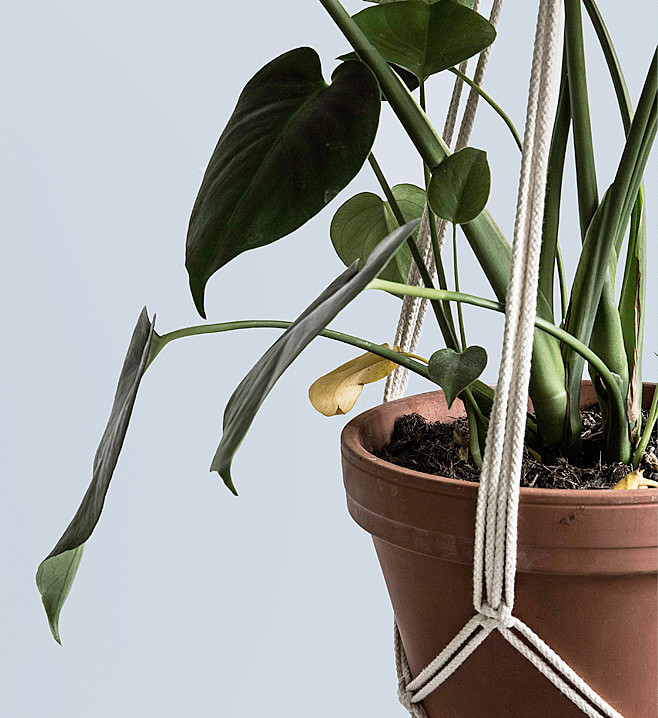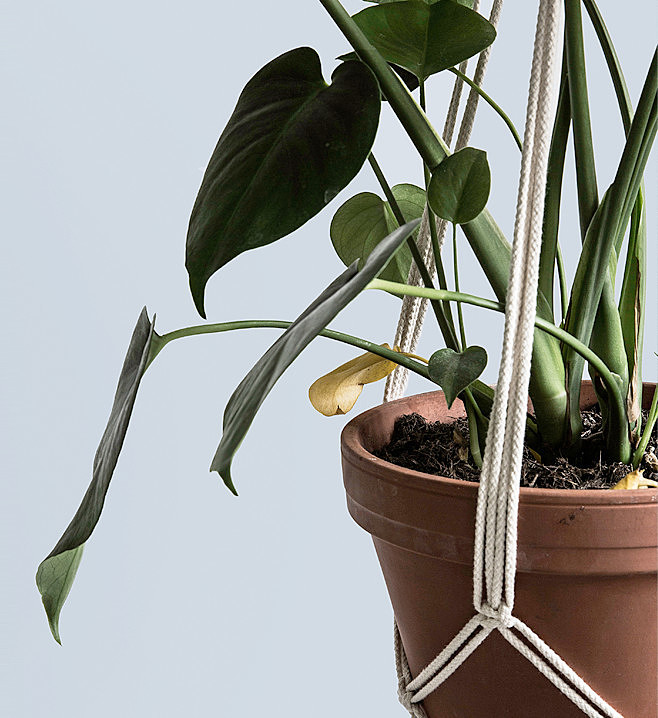An Urban Jungle
Grow Your Own


Plants are currently one of the most popular ways to fill a room and offer enormous decorative potential. It’s mostly the exotic species that have captured our attention, which surprisingly can have surprisingly easy maintenance for those who want to call on their own.
By observing a few basic rules your green roommates can last season after season with the right care. If you’re more practical about your green abilities (or lack thereof) rest assured there’s many ways to add greenery to your home such as singular stems, which are usually sold at florists in your neighbourhood. These can be presented beautifully in a glass vase, or pinned directly on the wall. Even subtle frames containing pressed leaves make a wonderful display on a shelf or table. Creativity knows no boundaries when experimenting with plants!
Alocasia macrorrhizos
Genus: The ‘Arrow Leaf’ as the name suggests, is a species belonging to the genus ‘Araceae’.
Care: The Alocasia prefers to be kept in shaded or partially shaded areas and grows all throughout the year if maintained at a 15 degree temperature. With its leaves being very sensitive to the sun, the Alocasia will burn easily when placed in direct sunlight during summer. In winter, it will often wilt, only to sprout again in spring. The soil should be kept moist, however be careful not to overdo it as overwatering could cause root rot!
Features: The magnificent leaves - also called elephant ears, can reach an impressive size of up to one meter in diameter. Even in a pot the Alocasia can grow to heights of up to two meters! No other plant is so well suited for a tropical feel in your home or nursery. The white stems can actually be eaten with the roots comparing similar to a potato when boiled!
Monstera deliciosa
Origin: Central American Tropics
Genus: The Monstera deliciosa, also known as the ‘Window Plant’, is a climber and belongs to the Araceae or ‘Aroids’ family. This plant can grow easily to heights of over five meters.
Care: A half-half location is ideal for this one, meaning they respond well in both sun and shade. The light however should not change too abruptly as the leaves emit of a lot energy to readapt to their environment. Changing location for the summer on the balcony is tolerable however, as long as the light is a similar brightness to what it had before.
Special Characteristics: The plant stays in beautiful condition from year to year however the trademark ‘cut outs’ in the leaves formally known as ‘fenestrations’ are only developed over time. The Monstera also bears an edible fruit, tasting apparently of pineapple, banana and mango which can be harvested between late July to late October. Aside from this small window of production the Monstera is completely toxic to both animals and humans.
Aloe Vera
Origin: South Africa. The very first original species of Aloe Vera is presumed to have grown in the Arabian Peninsula.
Genus: Aloe is a desert plant coming in a range of 200 species, however there is only one Aloe Vera.
Care: Since Aloe Vera calls its rightful home the tropics and subtropics, it's no wonder why it should flourish in sun and warmth. Young plants should never be exposed however to direct midday sun as this could burn their leaves. The semi shade is ideal and after a winter inside the Aloe should slowly be introduced back into sunlight. This plant in particular needs to be kept dry with overwatering a major issue to avoid. Sitting in your bathroom or unprotected by heavy rain is not recommended for Aloe to live a long and happy life. As Aloe grows quite quickly, repotting is essential. It’s important to use a large pot that isn’t too narrow. Since it’s quite heavy, Aloe can overturn small pots that are too small and damage its leaves.
Special Characteristics: Aloe Vera is one of the earth's most important medicinal plants. Whoever owns an Aloe must definitely inquire about their properties. It can be used for the purpose of internal as well as external diseases. It can assist with many things from intestinal issues, cholesterol and tumours just to name a few. Perhaps the most known aspect of the Aloe is its juice found within its fleshy leaves. This can be applied directly to the skin for sunburn or itching, or can be eaten directly (without the outer skin, and as an ingredient for a smoothie). In a dryer stature the juice thickens and turns yellow.
Opuntia robusta
Origin: Central Mexico
Genus: The Opuntia robusta belongs to the genus Opuntia, a member of the cactus family.
Care: The Opuntia requires plenty of light and can be placed outside in the direct sun if required. Shade often results in the Opuntia swelling unnaturally and losing its shape. Unlike many other species of cactus, the Opuntia can tolerate water, requiring regular waterings between spring and late summer. Avoid water-logging at any expense, as well as traces of lime in the soil.
Features: Avoid spraying cacti with water to prevent any stains on the plant.
Decorating with Leaves
In addition to plants an assortment of individual stems, sticks and leaves are too a beautiful touch in any room!